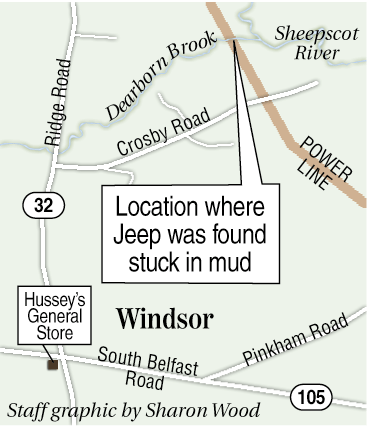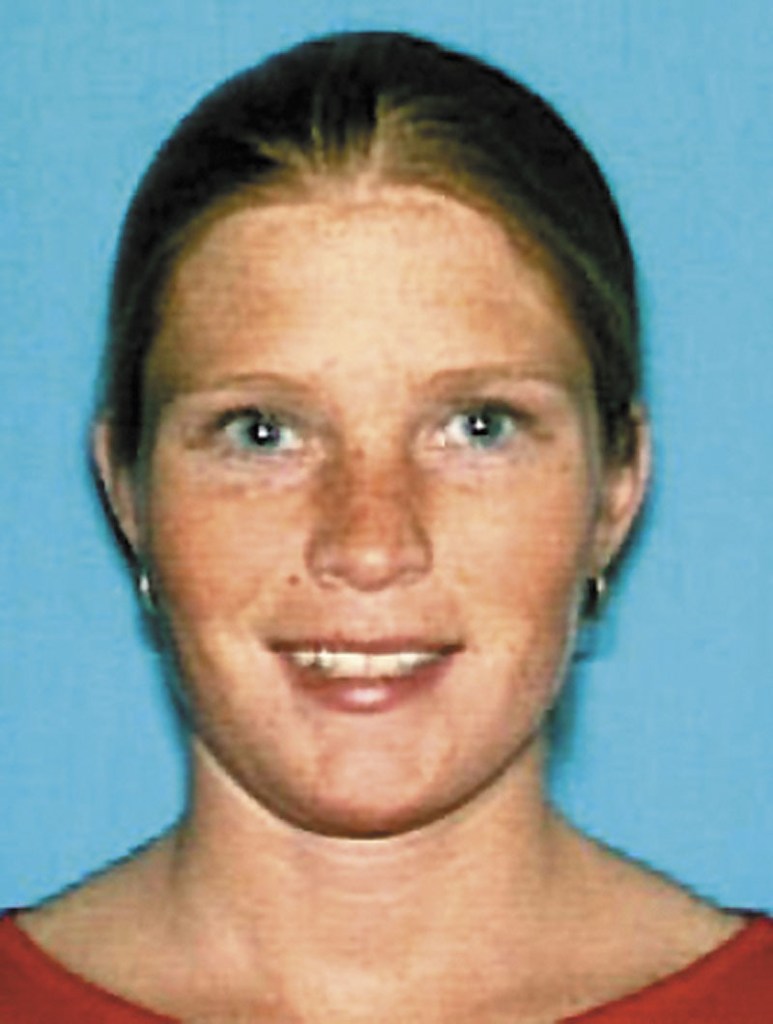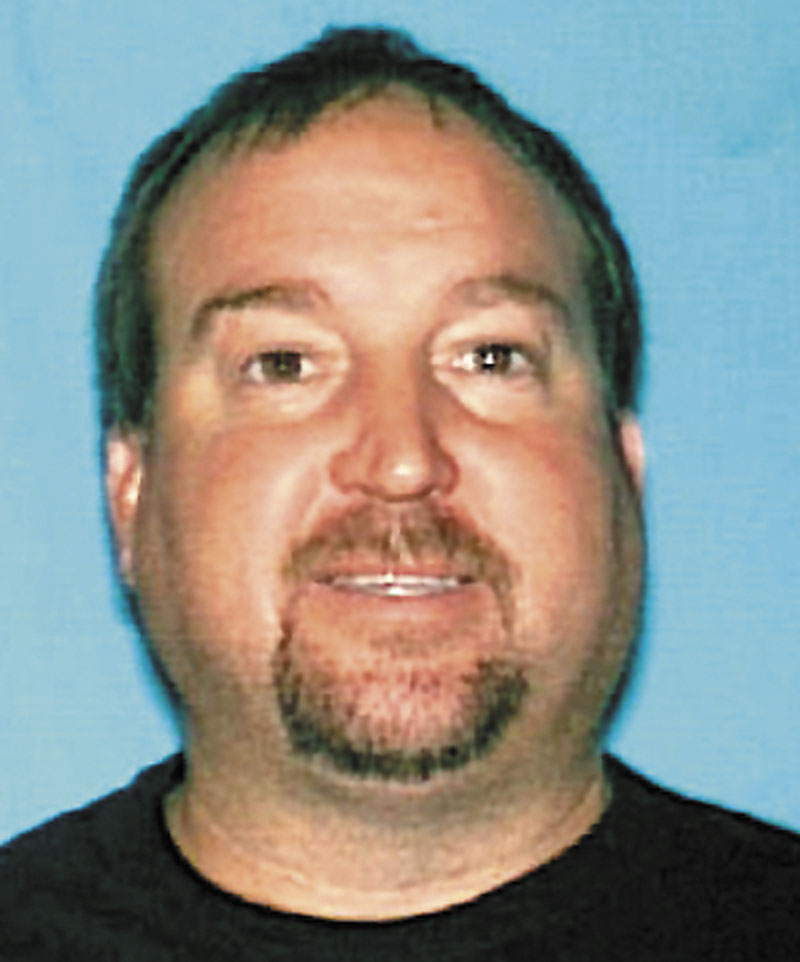WINDSOR — Three people who police believe died of carbon monoxide poisoning while doing off-road driving over the weekend may have taken steps to get the fresh air that would have saved their lives.
A Windsor couple, Reginald “Skip” Gay, 41, and his wife, 33-year-old Samantha Davis-Gay, and a friend, Luke Thompson, 22, of China, were found dead Saturday night inside a Jeep Wrangler. Investigators believe the three died as a result of carbon monoxide poisoning after the Jeep became stuck in a bog and continual revving created excessive exhaust.
Carbon monoxide is odorless and tasteless, so the only possible warning sign for the Gays and Thompson would have been unpleasant fumes from the exhaust.
“They may have noticed it coming on and rolled down the windows, thinking that would benefit them; but we’ll never know,” said Capt. Daniel Davies of the Kennebec County Sheriff Office. “Had they opened the back window, it would have created an air exchange and it may have prevented all this. We’ll never be able to determine why they didn’t do it.”
A spokesman at the Office of the Chief Medical Examiner said Monday that the cause of death cannot be verified until blood tests results are concluded, which may take several weeks.
Davies said alcohol may have been a factor in the deaths. He confirmed that a cooler found inside the Jeep contained alcoholic beverages, but declined to say whether there was evidence that the victims had been drinking before getting stuck.
According to the Centers for Disease Control and Prevention, people who are intoxicated can die from carbon monoxide poisoning even before they experience symptoms.
Davies said visible evidence, including how the Jeep was stuck in the water and the condition of the bodies, points to carbon monoxide poisoning.
There also is evidence that the three opened the windows in an effort to vent the hard-top Jeep of the fumes seeping up into the cabin. Reginald Gay repeatedly had gunned the Jeep’s powerful V-8 engine in an effort to crawl out of the muck hole, spraying the side of vehicle with mud.
Investigators found no mud inside the Jeep, however.
“That indicates the windows were up,” Davies said. “We’re not sure when they were rolled down, but even with the windows down, under these circumstances — in a ravine, with no breeze — there’s no air exchange, so the fumes are not leaving. They’re just sitting the car, having a good time, and inhaling.”
The trio left the Gays’ Crosby Road home around 7 p.m. Friday. A family member went searching for them Saturday afternoon and spotted the blue-and-white Jeep about 5 p.m. in a bog at the bottom of a ravine about 300 yards off Crosby Road.
Reginald Gay, an experienced off-road driver who owned Hard Core 4×4 in Windsor, was driving the Jeep. Thompson was in the front passenger’s seat. Davis-Gay, an employee of the Maine Department of Inland Fisheries and Wildlife, was seated on top of a cooler in the back.
Davies said the Jeep’s exhaust vented underneath the vehicle and out a tailpipe in the back, which was submerged in the bog. The front of the vehicle was out of the water.
“The gases have to escape somewhere,” Davies said. “They will find the path of least resistance; they’ll find their way into the cab.”
State Toxicologist Andrew Smith, while unable to comment specifically on the Saturday’s incident, said carbon monoxide poisoning from a blocked tail pipe is not unusual. He said incidents typically occur in severe winter storms when drivers become stranded in snow and keep the car motor running to stay warm. If the tailpipe is blocked by snow, the gases often seep into the passenger area, Smith said.
“The theory behind snow and mud would be the same,” he said.
His researchers confirmed that in December 2010, three people suffered carbon monoxide poisoning after their vehicle got stuck in the mud in Kennebec County. All three were treated at a local hospital and recovered, Smith said, adding that patient confidentiality laws prohibit him from providing details about the incident.
“When the exhaust is plugged, you can really have a very dangerous buildup inside the car,” Smith said.
Symptoms of carbon monoxide poisoning can set in quickly and can impair concentration ability and lead to confusion. In a short time, people can become unable to take action to save themselves.
“That’s one of the problems,” Smith said. “It compromises your ability to make decisions to act. If the concentrations are high enough, you can have death within minutes.”
Craig Crosby — 621-5642
ccrosby@centralmaine.com
CARBON MONOXIDE
* Carbon monoxide, or CO, is an odorless, colorless gas that can cause sudden illness and death.
* It is found in combustion fumes, such as those produced by cars, trucks, small gasoline engines, stoves, lanterns, gas ranges, heating systems, and burning charcoal and wood.
* CO from these sources can build up in enclosed or semi-enclosed spaces. People and animals in these spaces can be poisoned by breathing it.
* The most common symptoms of CO poisoning are headaches, dizziness, weakness, nausea, vomiting, chest pain and confusion. High levels of CO inhalation can cause loss of consciousness and death. Unless suspected, CO poisoning can be difficult to diagnose because the symptoms mimic other illnesses.
* Red blood cells pick up CO more quickly than they pick up oxygen. If there is a lot of CO in the air, the body may replace oxygen in blood with CO. This blocks oxygen from getting into the body, which can damage tissues and result in death.
Source: Centers for Disease Control and Prevention
CO HAZARDS
While most people associate carbon monoxide poisoning with attempts to heat homes and other spaces in the winter, poisonings also occur in the summer, according to State Toxicologist Andrew Smith.
He urged people to be aware of the following hazards:
* Opening camps: Propane is used to feed water heaters, refrigerators and other appliances. Vents that are plugged can lead to CO poisoning.
* Teak Surfing: “Surfers” hold on to the deck at the back of a boat and skim across the water. The boat exhaust can overcome the surfers quickly and lead to drowning.
* Engine repair: Preparing engines in boats, tractors and other equipment associated with summer can lead to poisoning if the engines are tested in enclosed spaces.
* From one to five people in Maine, and about 500 nationally, die from CO poisoning each year. About 120 people in Maine are forced to visit a hospital each year to be treated for CO poisoning.
Send questions/comments to the editors.







Success. Please wait for the page to reload. If the page does not reload within 5 seconds, please refresh the page.
Enter your email and password to access comments.
Hi, to comment on stories you must . This profile is in addition to your subscription and website login.
Already have a commenting profile? .
Invalid username/password.
Please check your email to confirm and complete your registration.
Only subscribers are eligible to post comments. Please subscribe or login first for digital access. Here’s why.
Use the form below to reset your password. When you've submitted your account email, we will send an email with a reset code.